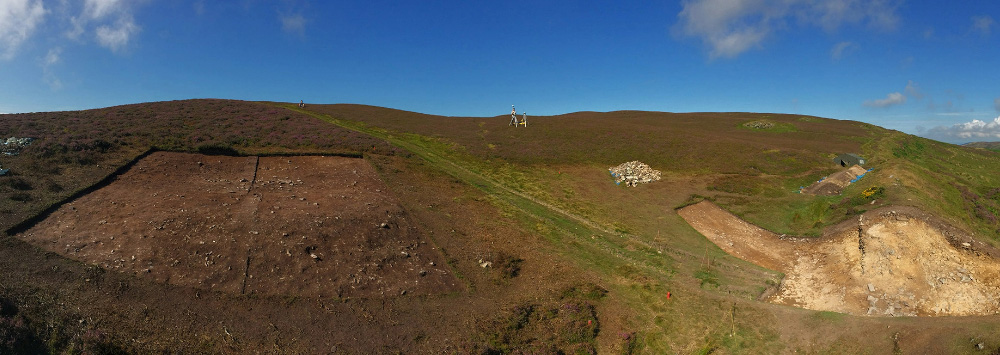Enclosing 19 ha, Penycloddiau is the largest hillfort in Wales and sits at 440 m above sea level. The Liverpool team worked in partnership with the University of Oxford’s excavations at Bodfari Hillfort, to help us understand how hillforts developed along the important routeway of the Clwydian Range, and the prehistoric people of North Wales.
The supervisory team on completion of the ditch excavation in 2016:
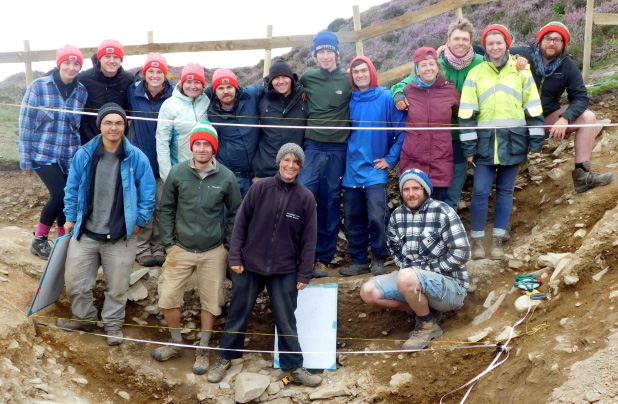
The project trained 430 undergraduate students in archaeological practice (60-80 students per season) with students also joining from the US, Canada, and Australia via the Institute of Field Research (IFR Global). The project also provided onward training to supervisory level for recent graduates and postgraduate students, building a strong and committed team centred on student learning. Student feedback across the seven seasons scored an average of 97%.
Students excavating the Later Iron Age hillfort rampart:
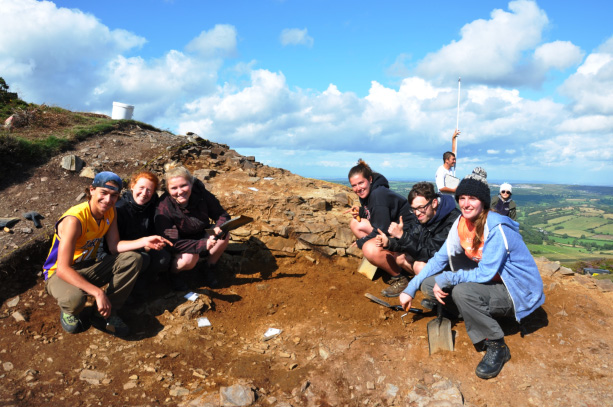
At Penycloddiau, undergraduate students were trained in:
- principles of stratigraphy and excavation
- soils science and formation processes
- single-context excavation and recording
- environmental sampling and processing
- archaeological surveying (topographic and geophysics)
- archaeological photography
- technical archaeological drawing (plans/sections)
- finds identification, processing, and field conservation
- finds illustration (traditional and digital)
Excavation aims/objectives
Beyond student training, the research aims of the project were to:
- discover when the Clwydian hillforts were first built
- provide a radiocarbon dated chronology for N Wales prehistory
- reveal how the hillforts developed, architecturally, over time
- provide information on the nature of Bronze Age-Iron Age society
Drone shot of the excavation trenches:
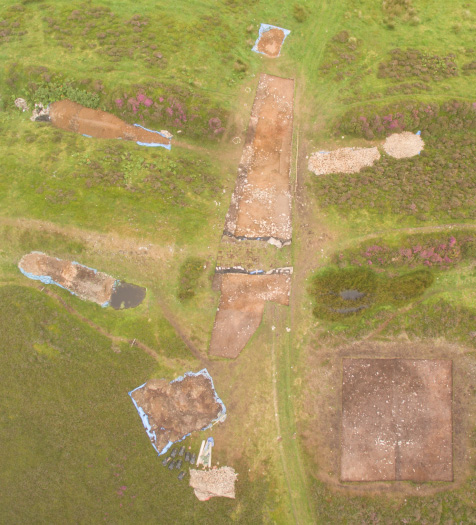
Excavation proceeded in two area trenches:
Area 1: an open-area (36 x 8 m) trench bisecting the hillfort earthworks, incorporating quarry scoop, inner rampart, ditch, outer rampart
Area 3: the house platform (12 x 12 m)
Excavation results
The excavations revealed seven phases of hillfort construction/use:
Phase 1. Palisade I: oak (12th-10th centuries cal. BC)
Phase 2. Palisade II: hazel wattle fence (early-mid 9th century cal. BC)
[abandonment]
Phase 3. Low timber and stone ‘box’ rampart (2.5 m wide, 0.6 m high). Construction 827-801 cal. BC. Destroyed 834-805 cal. BC.
[abandonment]
Phase 4. Early Iron Age: Boulder face, stone core (2.5 m wide, 0.90 m high) built from 1.9 m deep V-shaped, rock-cut ditch; topped by hedge.
[counterscarp bank begins]
Phase 5. ~4th century BC (2.5 m wide, 1.8 m high): Boulder face, stone & earth core. Material from quarry scoop + recut ditch. Three rapid builds, poor design decisions. Collapse
Phase 6. ~3rd century BC (5 m wide, 1.9 m high): Rampart refaced: ext. boulder face, int. earth-filled (quarry scoop recut) rectilinear boxes. Lime capped. Over-built. Use of radials to direct construction.
House platform: 6 m diameter organic-walled structure, with south-east entrance; beaten earth floor; C-14 dated to 2nd century cal. BC.
Artist’s impression of the Late Bronze Age hillfort fence:
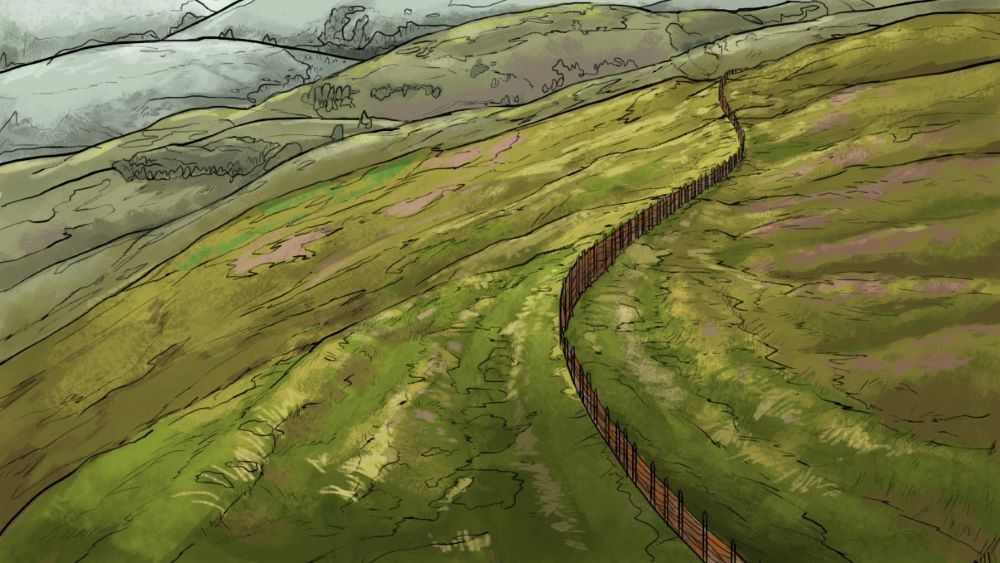
Excavation seasons
2020: Radiocarbon dating of the sequence. Seven phases of occupation/use: two Late Bronze Age palisades; a stone and timber ‘box’ rampart burnt down at 820 cal. BC; and three phases of increasingly substantial stone-built Iron Age rampart; and a 2nd century BC house platform. Bayesian analysis results are pending.
Details of the Late Bronze Age hazel wattle fence:
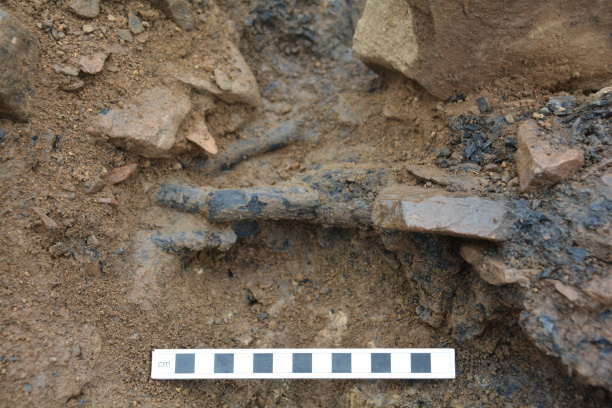
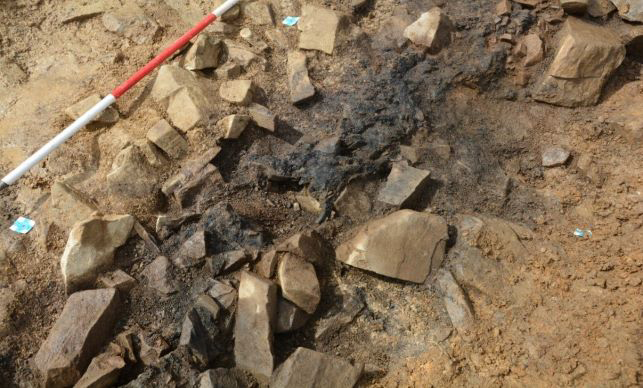
2019: Post-ex season. Writing up the site sequence: Six major phases of construction. Lab results suggest no evidence for arable agriculture (despite 30 litre sampling of all contexts) and evidence for Late Bronze Age hazel coppicing, the wattle fence using fast-grown roundwood. Dissemination of results to Hillfort Study Group.
Excavation underway on the Late Bronze Age palisade:
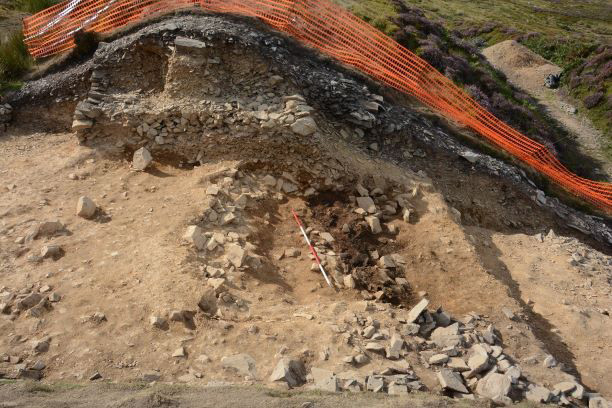
2018: Excavating the Bronze Age levels of the site. Digital terrain nodel produced by Mark Walters (CPAT). Dissemination of excavation results via Digging for Britain (1 million viewers).
Dr Rachel Pope discussing project results on Digging for Britain:
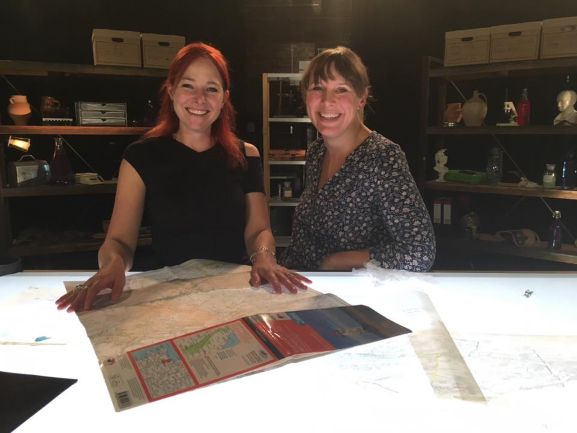
2017: Excavation of inner rampart and counterscarp bank, to record construction sequences and gain samples for radiocarbon dating. Completion of house platform excavation. Geophysical survey of the hillfort 19-hectare interior completed.
Excavation underway on the Iron Age hillfort rampart:
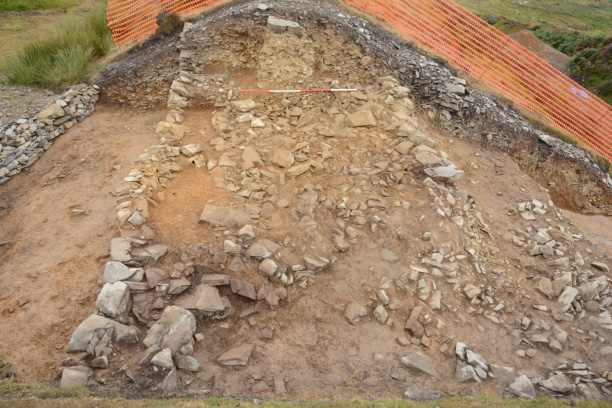
Total excavation of the counterscarp bank:
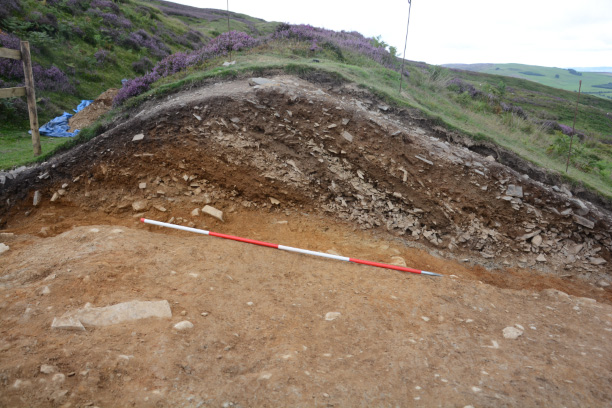
2016: Excavated the hillfort ditch (identifying two phases) and backfilled it with 40 tonnes of stone; The hillfort ditch was V-shaped, rock-cut, and 1.9 m deep; and spatially linked to the external walkway around the hillfort’s inner-rampart. Excavated the house occupation deposits and floor (taking a 100% sample).
Excavation of the hillfort ditch, showing primary fill:
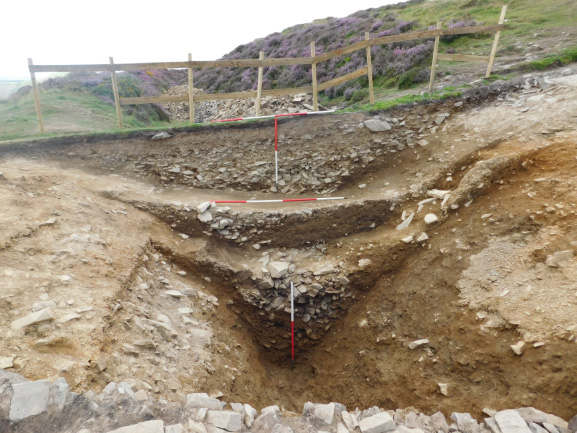
Project directors excavating the rock-cut hillfort ditch to natural:
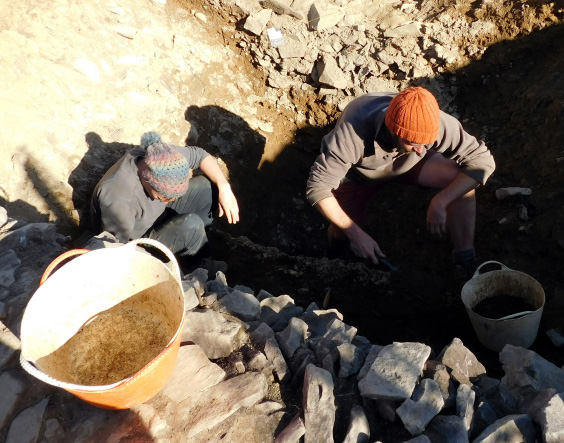
2015: Excavation of early rampart collapse events. Discovery of lime capping. Located the revetted edge of the ditch as contemporary with an kerbed metalled walkway between the inner rampart and the ditch. Proceeded with 100% excavation of house platform. Feature article in US Archaeology Magazine (2 million subscribers).
Digital terrain model of the hillfort, data by Pete Rauxloh (MOLA); processed by Mark Walters (CPAT):
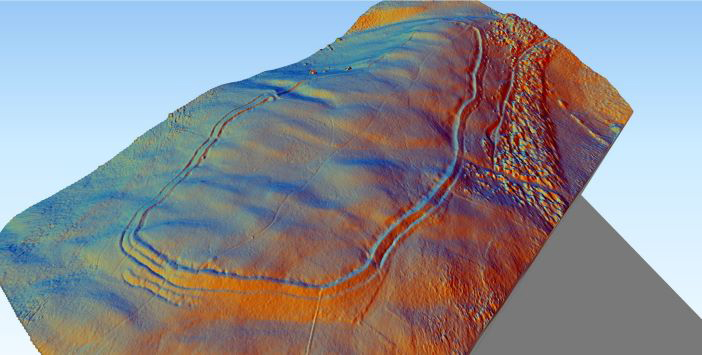
Geophysical survey of the hillfort interior by Hans Whitfield:
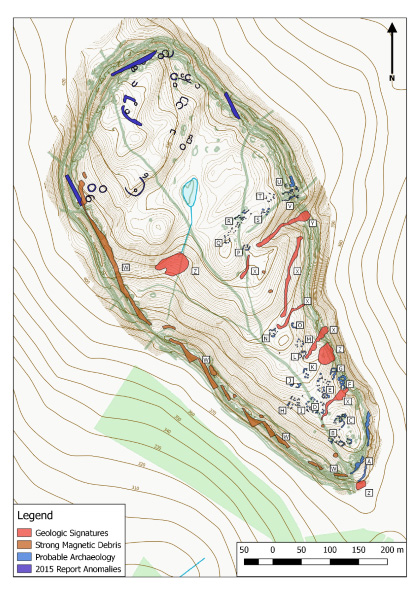
2014: Extended Area 1, to include the quarry scoop and investigate the potential for prehistoric features. Excavation of late collapse deposits. Excavation of later house platform deposits.
Excavation of the house platform:
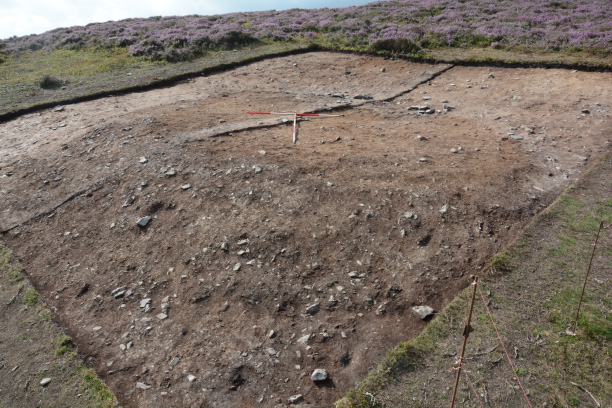
2013: Expanding area of investigation to a long section through the inner rampart, hillfort ditch and counterscarp bank. To demonstrate phasing between these three key architectural features.
2012: Pilot season to record sheep scrape damage to inner rampart for Cadw. Prehistoric deposits located.
Grey literature reports
Mason, R.G.S. and Pope, R.E. 2019. Excavations at Penycloddiau Hillfort Flintshire, North Wales: Interim Report 2017-2018. Unpublished report, University of Liverpool.
Whitefield, H. 2018. Geophysical Survey at Penycloddiau Hillfort: 2013-2017. Unpublished report, University of Liverpool.
Mason, R.G.S. and Pope, R.E. 2017. Excavations at Penycloddiau Hillfort Flintshire, North Wales: Interim Report 2016. Unpublished report, University of Liverpool.
Mason, R.G.S. and Pope, R.E. 2016. Excavations at Penycloddiau Hillfort Flintshire, North Wales: Interim Report 2015. Unpublished report, University of Liverpool.
Mason, R.G.S. and Pope, R.E. 2015. Excavations at Penycloddiau Hillfort Flintshire, North Wales: Interim Report 2014. Unpublished report, University of Liverpool.
Mason, R.G.S. and Pope, R.E. 2014. Excavation and Survey at Penycloddiau Hillfort Flintshire, North Wales: Interim Report 2013. Unpublished report, University of Liverpool.
Mason, R.G.S. and Pope, R.E. 2013. Excavations at Penycloddiau Hillfort Flintshire, North Wales: Interim Report 2012. Unpublished report, University of Liverpool.
Visit Dr Rachel Pope's academia.edu site and view grey literature.
Publications
Pope, R.E., Mason, R.G.S. and Campbell, L. in prep. Penycloddiau and Britain’s First Hillforts (survey and excavations 2012-2019).
Powell, E. 2015. Hillforts of the Iron Age: Searching for evidence of cultural changes that swept the prehistoric British Isles. Archaeology Magazine (Nov/Dec), 54-63.
